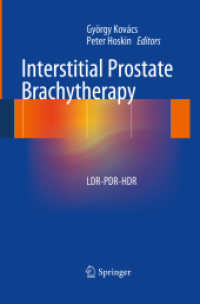- ホーム
- > 洋書
- > ドイツ書
- > Humanities, Arts & Music
- > Music
Description
(Text)
Die "Symphonie Nr. 8" ist ein Ausnahmewerk. Dies gilt zunächst, rein äußerlich, für ihre Besetzung, die mit dem Aufgebot von drei Chören und acht Solisten sowie einem Orchester von weit über einhundert Instrumentalisten wenige Entsprechungen in der Musikgeschichte kennt. Aus dieser Besetzung ergibt sich, als zweite Besonderheit, der durchweg instrumental-vokale Mischcharakter des Stücks: der prototypische Fall einer "Vokalsymphonie", die - so Mahler - "von Anfang bis zu Ende durchgesungen wird". Die dazu nötigen Textvorlagen beeinflussen wiederum den Aufbau in der Weise, dass die in der Symphonik vorherrschende Viersätzigkeit durch zwei kompositorisch stark divergierende "Teile" ersetzt wird. Und wie um die äußere Divergenz zu betonen, umfassen die Textvorlagen der beiden Teile mit dem Hymnus "Veni creator spiritus" und der Schlussszene aus Goethes Faust zwei Dichtungen, die nicht nur in unterschiedlichen Sprachen verfasst, sondern in ihrer Entstehung auch noch durch über tausendJahre voneinander getrennt sind. Ein Werk der Extreme also - und ein Werk der Gegensätze. Doch scheint es, als hätten gerade diese Besonderheiten der Symphonie eine herausragende Stellung beschert und zu Mahlers Einschätzung beigetragen, dass mit der Symphonie Nr. 8 "das Größte" gelungen sei, "was ich gemacht [habe]". In sinniger Koinzidenz billigte er der Symphonie damit den gleichen Rang zu, wie ihn Goethe der Faust-Dichtung als seinem erklärten "Hauptgeschäft" zugestand. An der Überzeugung, dass die Symphonie Nr. 8 sein eigenes Opus summum sei, hielt Mahler unbeirrt fest, auch über die Entstehung des Spätwerks hinaus. (Christian Wildhagen)
(Table of content)
1. Teil - Hymnus: Veni, creator spiritus · 2. Teil - Schlussszene aus "Faust"
(Text)
Gustav Mahler's "Symphony No. 8" is a work of exceptions. Seen from the outside, this is true of the forces that are used: with its three choirs, eight soloists and an orchestra of far more than one hundred musicians, there are few similar works in the annals of music. This cast of performers determines the second exceptional element of the work, the mix of instrumental and vocal characteristics that makes it to the prototype of a 'vocal symphony', which - as Mahler put it - 'is sung from beginning to end'. In turn, the texts that are sung influence the structure of the whole, replacing, as it were, the usual four movements of a symphony with two strongly divergent 'parts'. And, finally, as if to emphasize this divergence, the texts used - the hymn "Veni creator spiritus" in the first part and the final scene of Goethe's Faust in the second - are not only written in two languages but also separated in their origins by more than one thousand years.
Thus it is a work of extremes, and a work of contradiction. It seems, however, that it was exactly these distinctive features that lifted the symphony above the others and convinced Mahler that his Symphony No. 8 was 'the greatest' work 'that I have composed'. It is an understandable coincidence that he thus raised Symphony No. 8 to the same rank within his oeuvre as Goethe, who claimed that the drama was his 'Hauptgeschäft' [main work], did with Faust. Even after composing his late works Mahler retained his belief that Symphony No. 8 was his 'opus summum'. (Christian Wildhagen)
Instrumentation:for soloists, boys' choir, 2 mixed choirs (SATB) and orchestra







